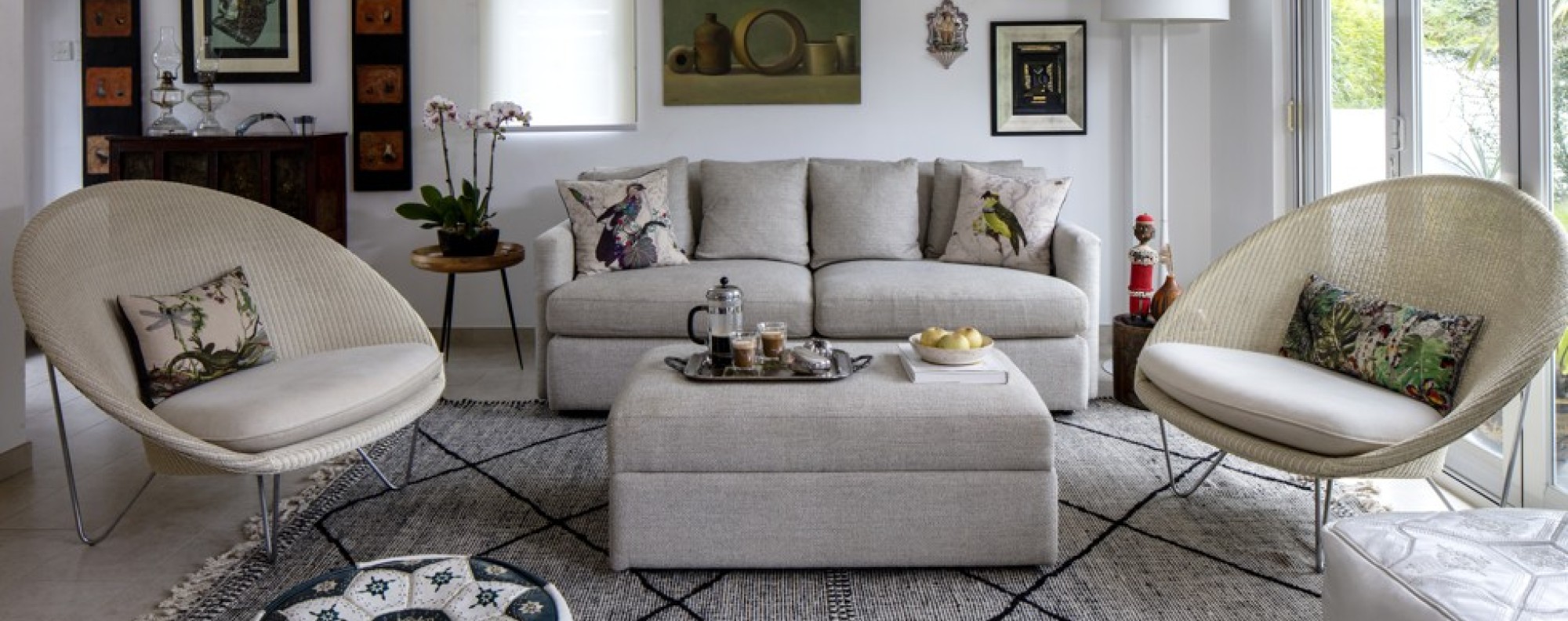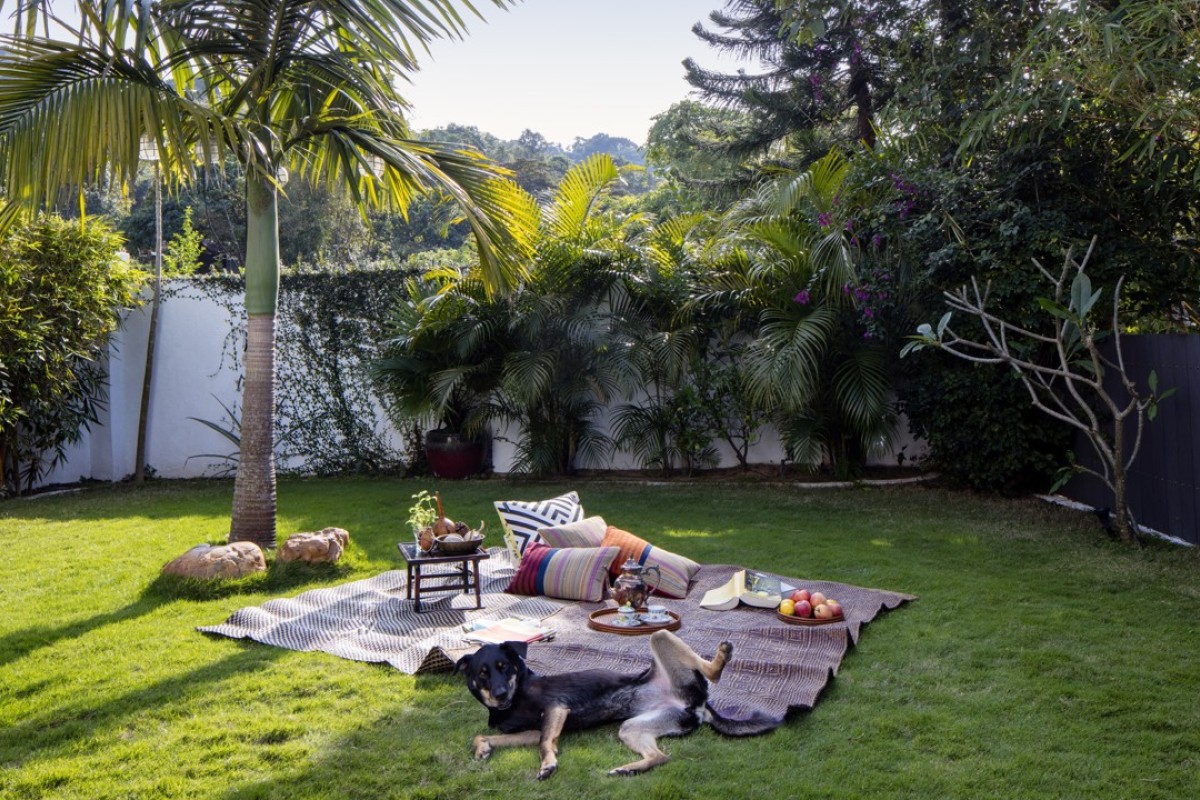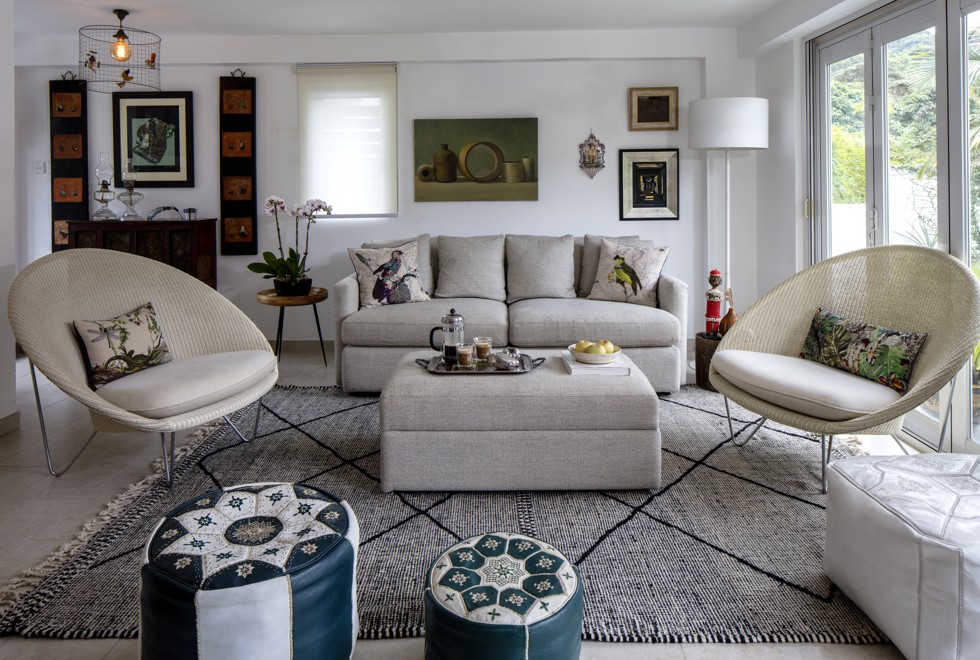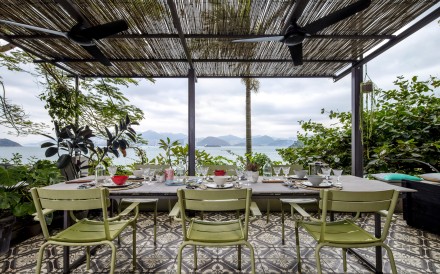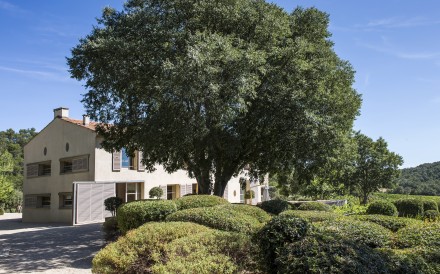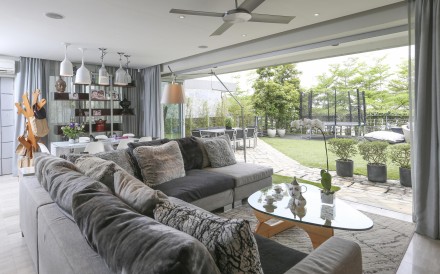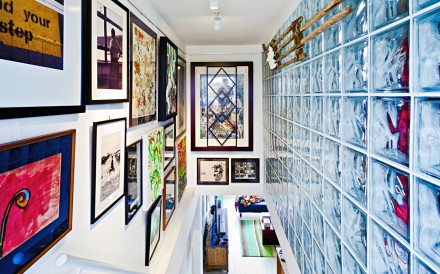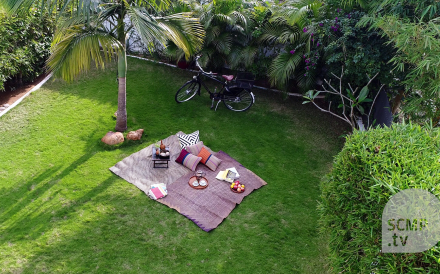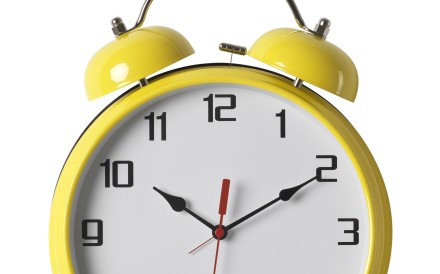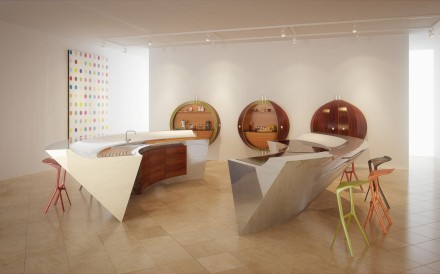“Over my dead body” was Inez Albert’s initial reaction to husband Nick Morgan’s suggestion that they move to the farthest reaches of Sai Kung Country Park. She came round, however, persuaded by this 2,100 sq ft village house, the garden and the price in a market that “had gone crazy”. Three years on, she finds it hard to leave.
“I work in Taikoo Shing [as digital director, Asia Pacific, for The Economist] and, at first, I found the drive a nightmare,” she says. “But once I get home, I don’t want to budge. It’s beautiful, especially on a sunny day. But it’s Nick who really gets the benefit.”
Morgan, a media consultant, works from home, taking breaks to swim off one of Hong Kong’s loveliest beaches, a couple of minutes’ walk away and visible from the roof terrace.
With a herd of feral cows grazing just beyond the garden hedge, monkeys playing in the trees nearby and the village basking in the sound of silence on the day we visit, it is a slice of rural heaven.
“We bought the house in great shape and did very little apart from rip out a family bathroom on the ground floor to create more storage, put in a few picture windows in the family room and tidy up the garden,” Albert says.
The space is spread over three floors, with an open-plan kitchen, dining and living area on the ground floor; two bedrooms, a family bathroom and a large, bright family room on the middle floor; and the master suite and a study/spare bedroom on the top floor. Then there’s the roof, with frameless-glass windbreaks, a large shade sail and a charming sitting area overlooking the beach, the bay and the surrounding tangled forest, mangroves and rock-strewn hillsides.
“I’ve recently got into yoga and it’s lovely to drag my mat up here,” Albert says. “I was brought up on a sugar plantation in the central Philippines and I love greenery. I love the sea, but it’s the greenery that was really important.”
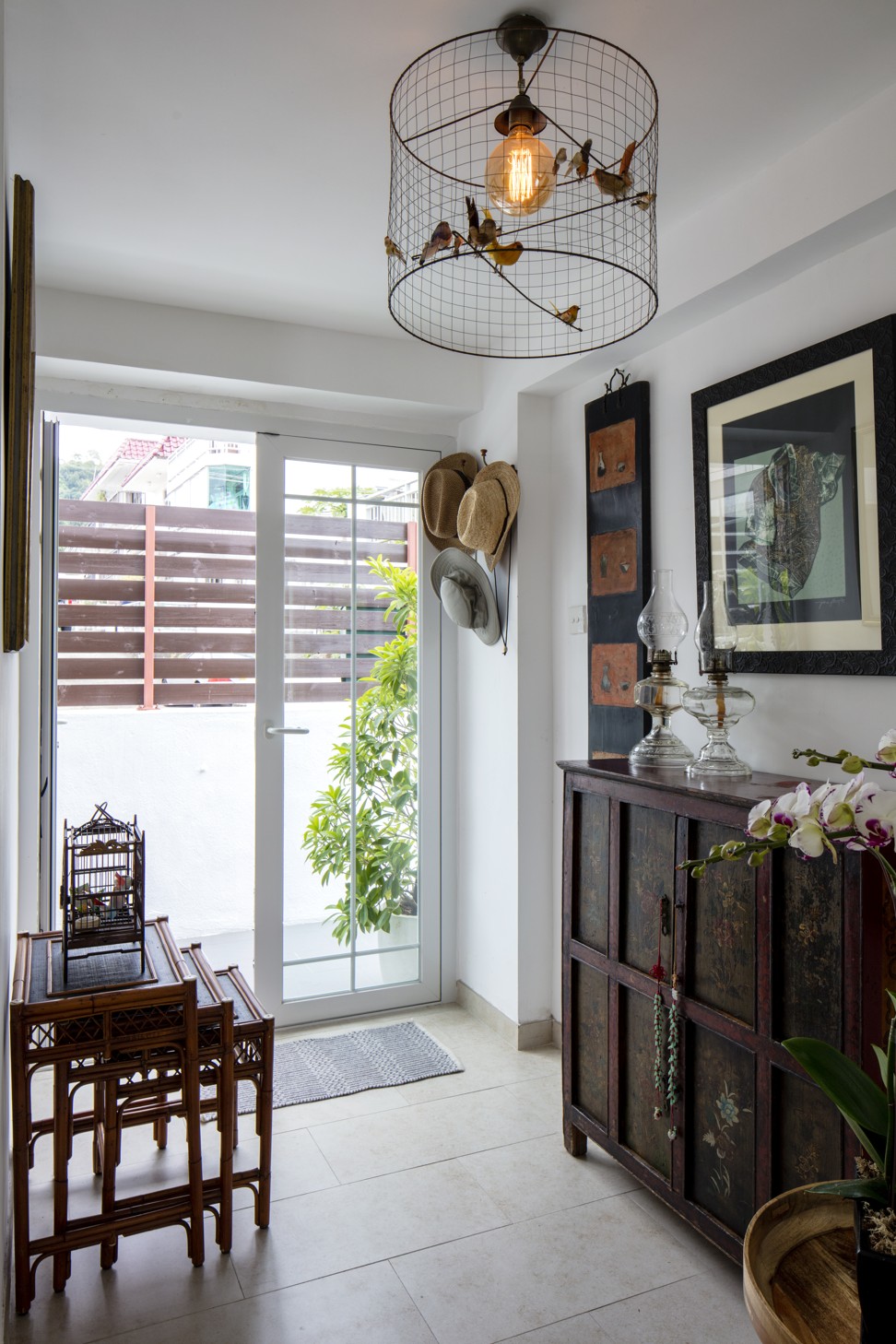 Given the house’s good bones, turning it into a home was more about personalisation than renovation. Fortunately, the couple and their two grown-up sons – the eldest of whom, Alex, is at university in Britain – had a lifetime of possessions to draw on.
Given the house’s good bones, turning it into a home was more about personalisation than renovation. Fortunately, the couple and their two grown-up sons – the eldest of whom, Alex, is at university in Britain – had a lifetime of possessions to draw on.
“We didn’t go for a ‘look’, it just kind of evolved,” Albert says. “We have too many books and too many paintings, some of which have been stacked on the staircase for years. “The paintings all mean something, each has a story.”
‘Minimalism has no soul’ – Chilean designer on his rich interiors
Most of their other possessions do, too. Albert picked up many items on trips home to the Philippines, including a pair of quirky embroidered heads bedecked in beads and appliqué, sitting on upholstered stools made from old olive-oil tins. Holidays in Morocco yielded embroidered leather ottomans and a Beni Ourain rug; a Yoruba beaded hanging is a souvenir of a trip to Kenya; a black cabinet was made-to-order in Singapore.
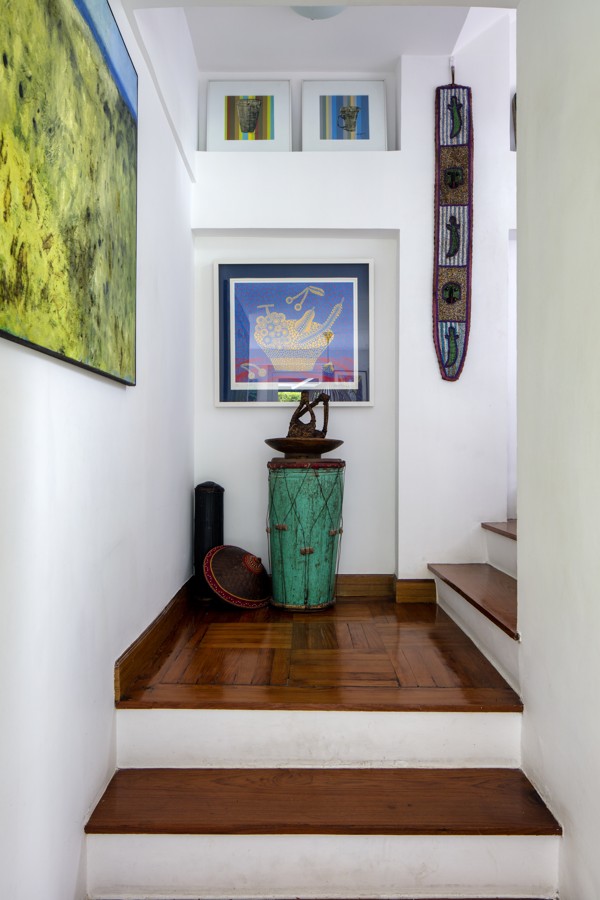 And then there are the heirlooms, such as a desk that once belonged to Albert’s grandfather and a framed 1951 receipt from Chan, Tuck & Co, of Ice House Street, for HK$84 for silk uniform shirts made for Morgan’s father, who was in the Australian Navy. Son Tom’s room features a poster by Morgan’s great-uncle, the artist Charles Meere, for the 1938 British Empire Games in Sydney. Downstairs hangs a collection of botanical prints, a gift from one of Albert’s sisters, who has since passed away.
And then there are the heirlooms, such as a desk that once belonged to Albert’s grandfather and a framed 1951 receipt from Chan, Tuck & Co, of Ice House Street, for HK$84 for silk uniform shirts made for Morgan’s father, who was in the Australian Navy. Son Tom’s room features a poster by Morgan’s great-uncle, the artist Charles Meere, for the 1938 British Empire Games in Sydney. Downstairs hangs a collection of botanical prints, a gift from one of Albert’s sisters, who has since passed away.
The couple’s 27 years in Hong Kong have been interrupted by a two-year stint in Rome, the source of two of their favourite pieces.
“If everything else went, the painting above the sofa [in the living room] is the piece I’d save,” Albert says of a still life of five pots by Italian artist Mario Liccardo. “I’m one of five sisters and I see us all there. I’m the youngest; that’s me [the little pot] on the end.”
Morgan indicates his favourite photograph, a framed black-and-white of him and his two sons sharing a bicycle in a Roman park, taken in 2001 or 2002.
“I tell myself not to be too obsessive about my house, especially when you read so much about people losing their homes. It’s just stuff,” Albert says. “But I do like to be able to look around and see memories of our life and the wonderful trips we’ve taken.”
And these days she’s looking around with some nostalgia because the family is getting ready to move to Britain.
Former Hong Kong resident’s New York home a tribute to her travels
“It’s a big move,” Albert notes. “It’s going to be much, much better for Tom, who has special needs. We’ve been lucky to have the best of both worlds – the buzz of Hong Kong city and work life during the day and the space and serenity of the country park to retreat to.
“The transition from towers and traffic to trees, hills, wild cattle, monkeys and the occasional porcupine is hard to beat. I will miss it all hugely.”
Living area The sofa and matching ottoman were US$1,359 (plus US$509 shipping) from Crate & Barrel. The cushions (£60/US$85-£138 each) were from Glasgow-based Timorous Beasties. The mango-wood side table (HK$2,800-HK$4,070) is available at Manks and the floor lamp was bought years ago from Sofa Sale. The “Joe” Lloyd Loom armchairs (HK$7,950 each) are from Tree. The leather ottomans and Beni Ourain rug were picked up in Marrakesh, Morocco.
By the entrance hangs a pair of antique door panels, a gift picked up in Macau by one of Inez Albert’s sisters. The mixed-media artwork in between came from Art Circle Gallery, in the Philippines. The Tibetan cabinet, from Hollywood Road, and the Volieres Bird Cage lampshade, from Lane Crawford, were both bought years ago.
Above the sofa the still life, by Mario Liccardo, was bought through Sotheby’s. The benditero (baptism font) came from a small gallery in Rome, Italy. An oil painting by Nilo Badajos, from Art Circle Gallery, hangs above a painting by Federico Aquilar Alcuaz, from Galerie Raphael, also in the Philippines.
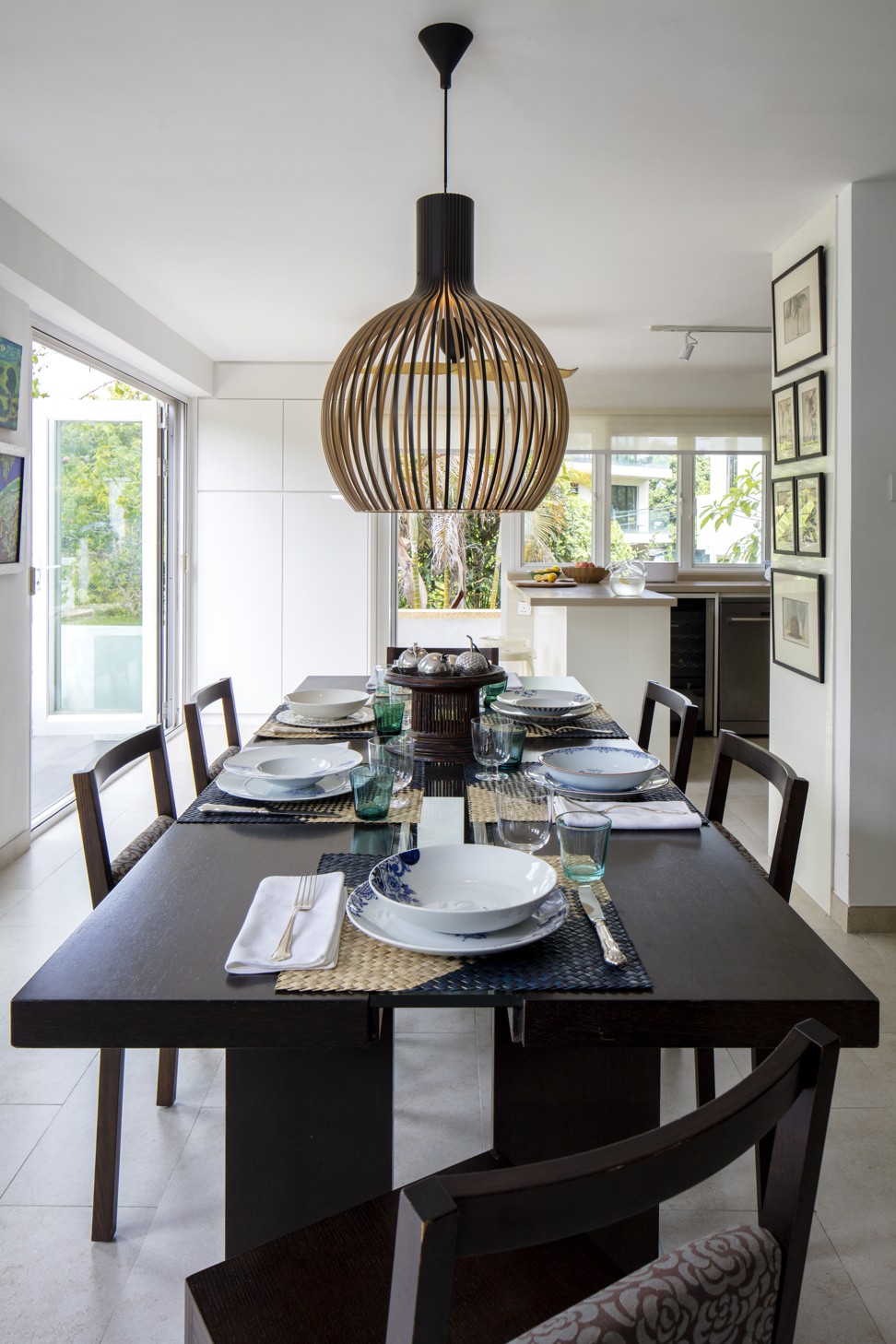 Dining area The wenge-wood dining table and chairs were bought in Rome, when the couple lived there in 2001-02. The Octo 4240 ceiling lamp, by Secto Design, cost HK$7,470 from Manks.
Dining area The wenge-wood dining table and chairs were bought in Rome, when the couple lived there in 2001-02. The Octo 4240 ceiling lamp, by Secto Design, cost HK$7,470 from Manks.
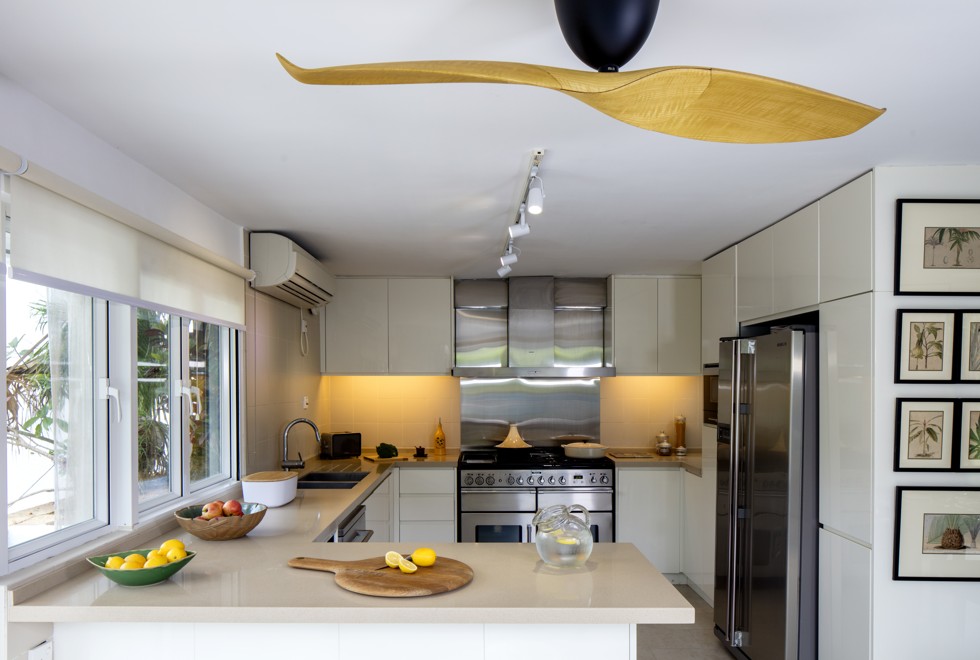 Kitchen The cabinetry and appliances, including the Rangemaster Excel 110 came with the house. The botanical prints were a gift from one of Albert’s sisters. The Aeratron E502 fan was from G.O.D.
Kitchen The cabinetry and appliances, including the Rangemaster Excel 110 came with the house. The botanical prints were a gift from one of Albert’s sisters. The Aeratron E502 fan was from G.O.D.
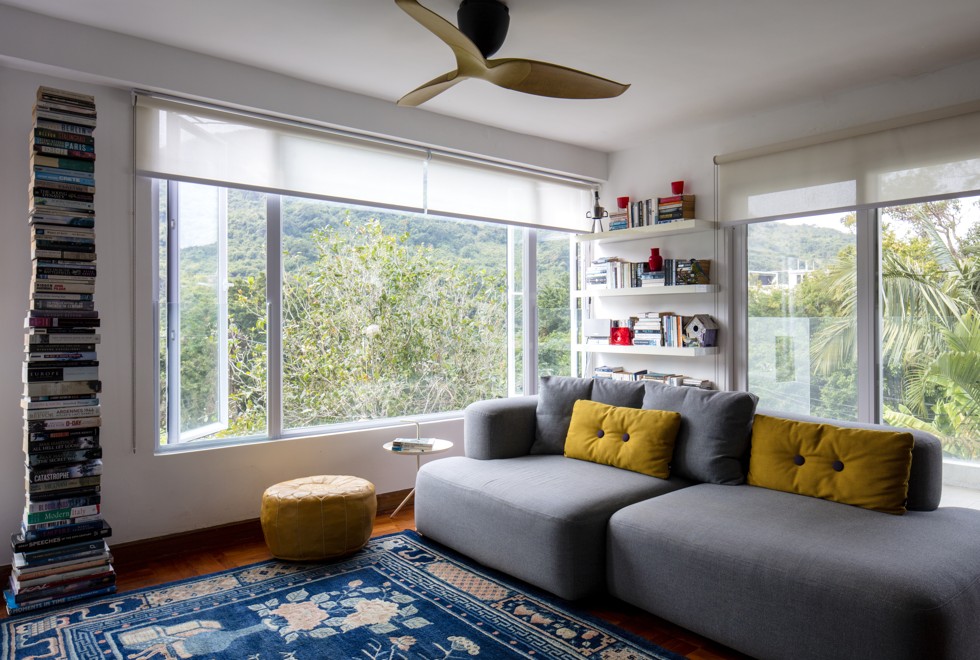 Family room The family room is where the couple hang out with their son, Tom. The furniture was bought years ago. The Fritz Hansen Alphabet sofa (HK$79,000) came from Aluminium. The Dot cushions and DLM side table are by Hay. The rug was from Baotou, Inner Mongolia, and the ottoman from Marrakesh. The Aeratron E502 fan is the same as before.
Family room The family room is where the couple hang out with their son, Tom. The furniture was bought years ago. The Fritz Hansen Alphabet sofa (HK$79,000) came from Aluminium. The Dot cushions and DLM side table are by Hay. The rug was from Baotou, Inner Mongolia, and the ottoman from Marrakesh. The Aeratron E502 fan is the same as before.
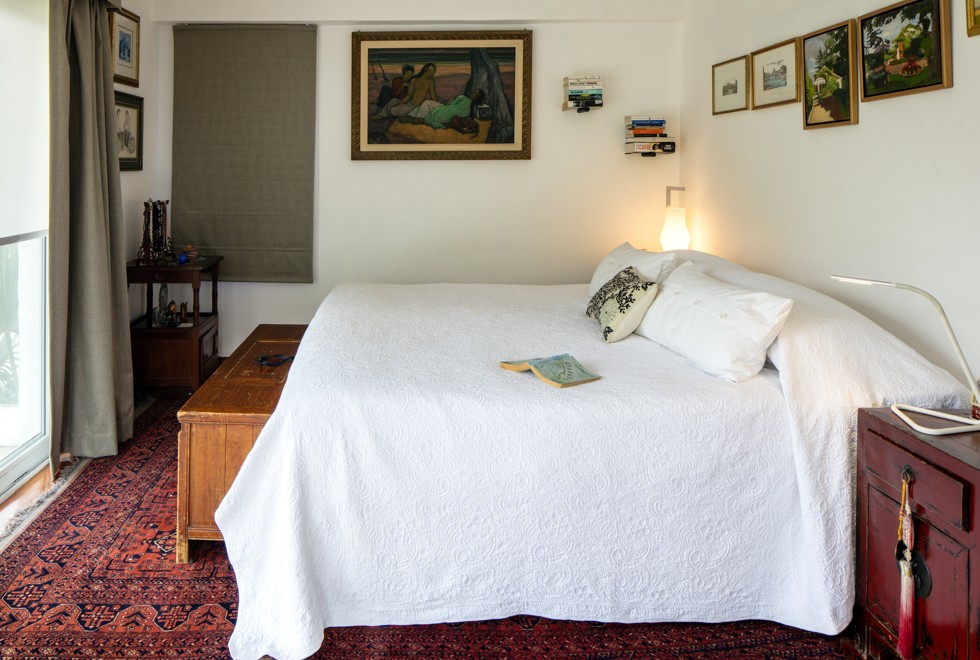 Master suite The master bedroom is furnished mainly with old pieces. The red lacquer Chinese side tables were from Singapore, the money chest at the foot of the bed was from Macau, the wooden side table (left) was from Manila and the rug was from Pakistan.
Master suite The master bedroom is furnished mainly with old pieces. The red lacquer Chinese side tables were from Singapore, the money chest at the foot of the bed was from Macau, the wooden side table (left) was from Manila and the rug was from Pakistan.
The table lamp on the far side was bought years ago and the Harte lamp (HK$179.90) from Ikea. The large oil painting, Women and Dog on the Beach, by French painter André Maire, was bought through Christie’s.
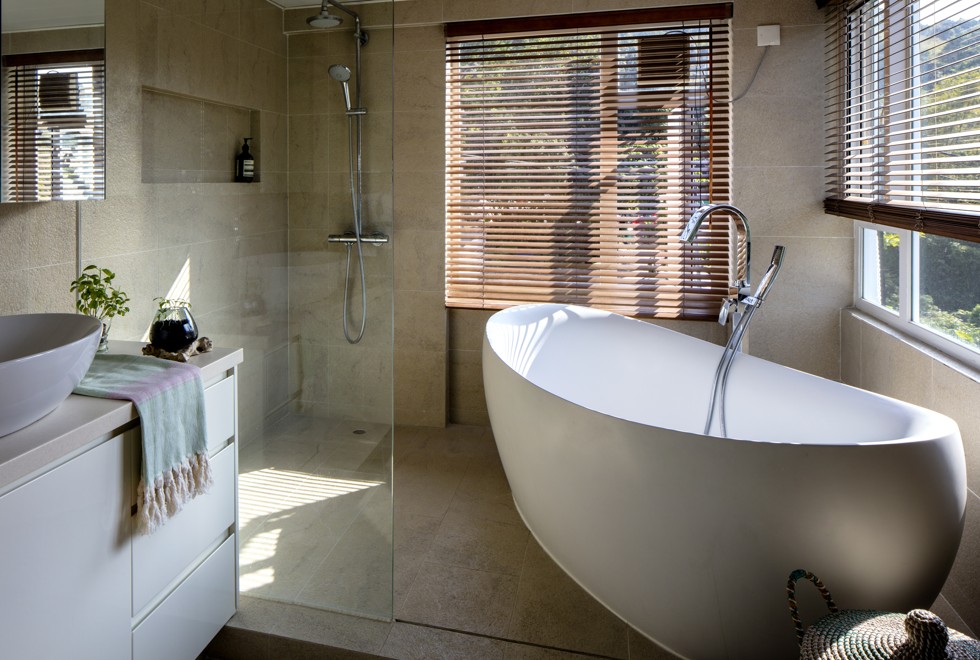 En-suite bathroom “I call this my office,” Albert jokes. The en-suite bathroom was fitted out before they bought the house. “All we did was fit a mirror cabinet.”
En-suite bathroom “I call this my office,” Albert jokes. The en-suite bathroom was fitted out before they bought the house. “All we did was fit a mirror cabinet.”
 Garden The one area that was totally revamped was the garden. “Where the palm tree is, there was a huge pond that didn’t make any sense. So we filled it in,” Nick Morgan says.
Garden The one area that was totally revamped was the garden. “Where the palm tree is, there was a huge pond that didn’t make any sense. So we filled it in,” Nick Morgan says.
They also replaced a concrete slab with patio tiles, laid a lawn and planted a bamboo hedge. It’s the perfect picnic spot for Latxa the dog.
The side table came from Hollywood Road years ago and the handwoven rugs and cushions were from the Philippines.
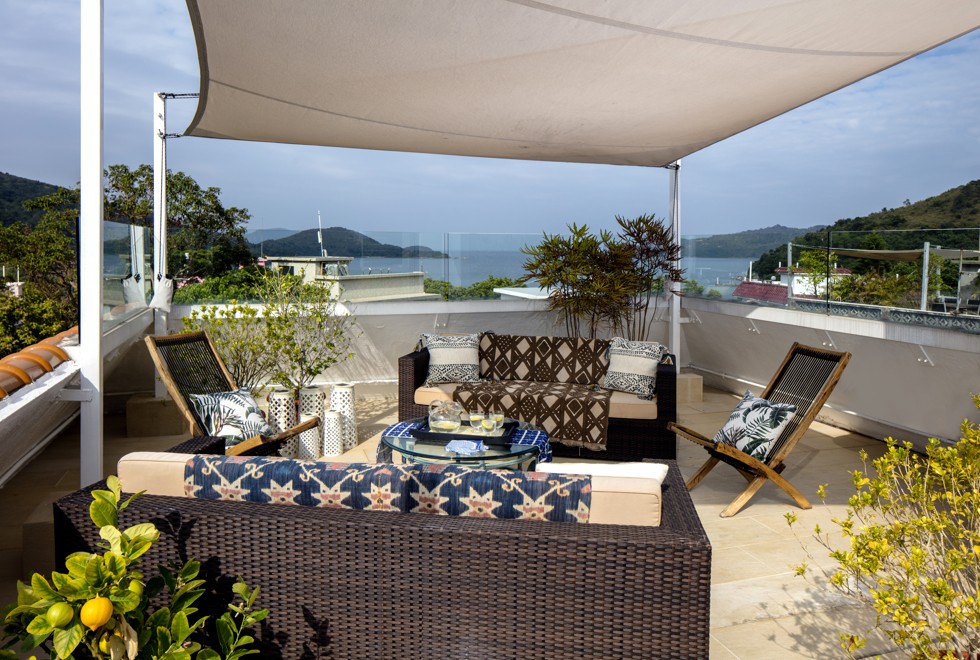 Rooftop The sofas, folding chairs and coffee table came from their previous home. The sunshade (HK$7,750) was made to measure by ProShade Sail.
Rooftop The sofas, folding chairs and coffee table came from their previous home. The sunshade (HK$7,750) was made to measure by ProShade Sail.
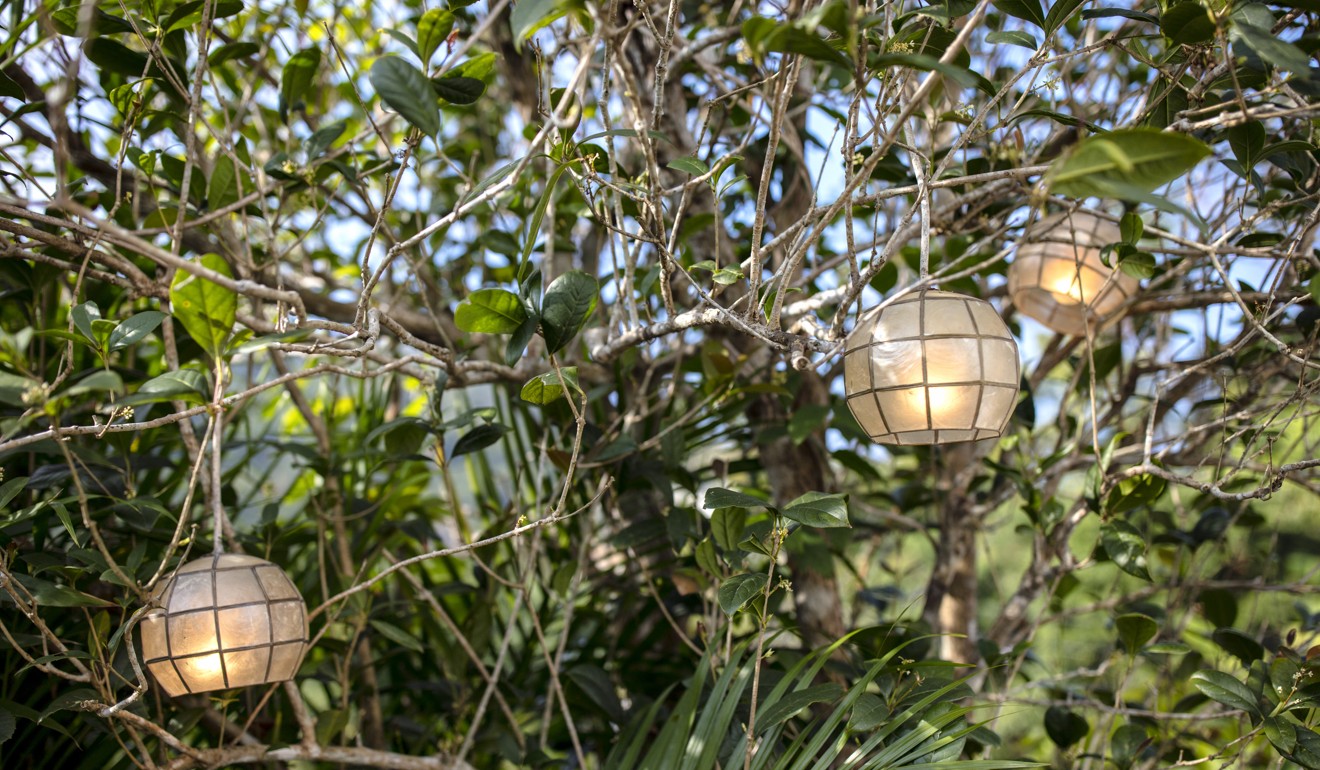
Tried + tested
Light fantastic Pretty capiz shell lamps, strung up in an osmanthus tree in the garden, light up an outdoor dining table.
“I have hung up similar lamps outside every house we’ve lived in,” says Inez Albert, who buys them for about US$2 each from street sellers specialising in capiz, on Gilmore Street, in Manila, the Philippines.
However, she warns that they are fragile and often have to be replaced after a typhoon.
